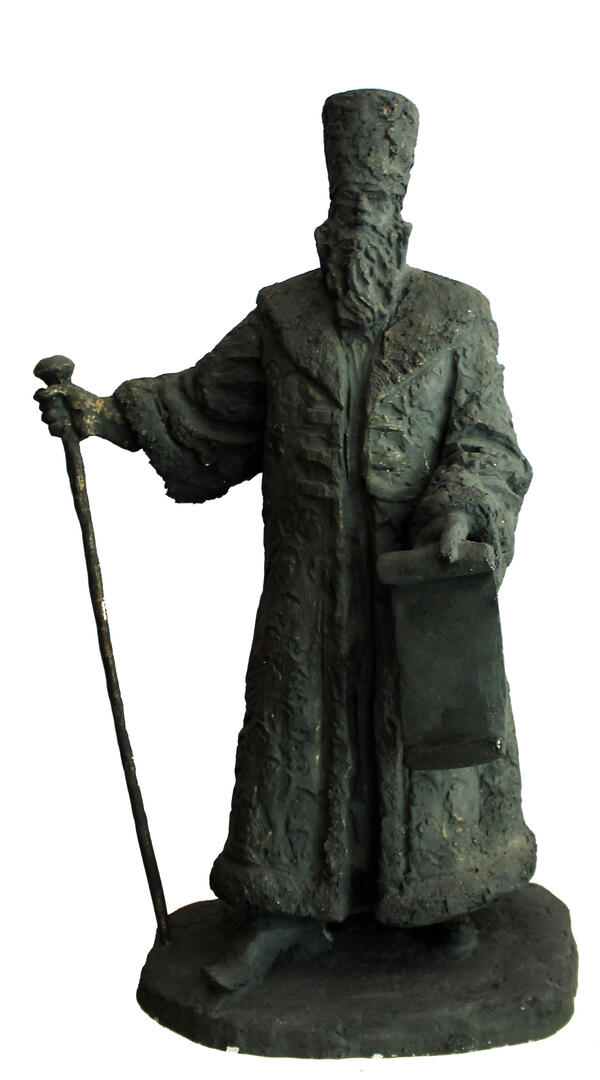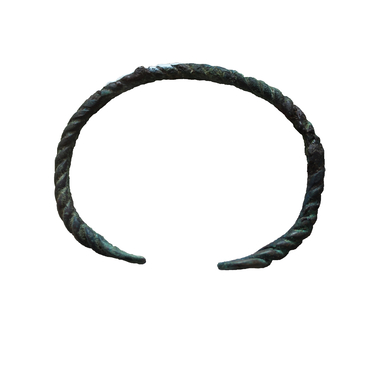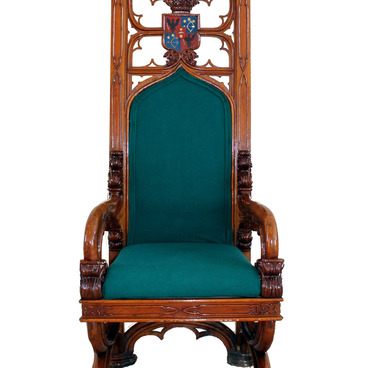The Kozlovsky family traces its genealogy back to the younger branch of the Great Smolensk princes. The family was founded by Prince Vasily Kozlovsky. The last name came from the Kozlovskaya District which belonged to the family for generations. The ancestors of the future founder of Syzran were military commanders and soldiers in the numerous military campaigns of the 15th and 16th centuries.
Prince Afanasy Kozlovsky was the military commander in Kursk in the 1620s. In 1617 or in 1619, he had a son by the name of Grigory there, who later went on to play a key part n the founding of Syzran. The first mention of Grigory’s service dates back to 1627 when he is mentioned in boyar books as a patriarch steward. Back then, young members of high-class boyar families would often serve royal meals.
Court stewards would usually eventually end up serving in the royal regiment and then get appointed military commanders in small towns. It is known that in 1645, Grigory Kozlovsky was the military commander in Belozersk. Then, in 1647, he was the military commander in Ryazan. He took part in the wars between Russia and Poland and between Russia and Sweden. In 1658, he participated in a military operation outside Smolensk.
In 1668, Tsar Alexei Mikhailovich made Grigory Kozlovsky a civil servant, a rank that involved such responsibilities as running the affairs of the boyar Duma or heading up government ministries. From 1669 through 1673, the prince was in Kyiv as a representative of the Tsarist government in Ukraine. During the war with Turkey in 1679, he took part in a military campaign to protect the southern frontiers of Russia. In 1682, he was made a boyar but shortly afterward was stripped of the title because of his multiple confrontations and stubbornness in local government disputes.
In 1682, Kozlovsky got appointed the military commander in Simbirsk. In 1683, a royal decree was dispatched there to gather a regiment of Simbirsk and Karsun nobles, noble children, Tartar nobles, musketeers, and cossacks to build the fortress of Syzransk. Work on the new fortified settlement broke ground on June 4, 1683, and was finished by September 18.
Kozlovsky was restored as a boyar for the successful completion of the construction project. In April 1684, the underage co-tsars John and Peter issued a decree granting Kozlovsky a golden atlas caftan made from sable furs, a gilded goblet with a lid, and 80 roubles in money for the preservation of peace and calm in Ukraine and successful military campaigning against the Turks and the Crimean Tartars.
Kozlovsky was soon recalled to Simbirsk where he continued to follow the instructions of the Moscow tsars. Among other things, he supervised the construction of the Kashpirskaya fortress in 1685. Grigory Kozlovsky stayed in the Samara Region until the mid-1680s and then left for Moscow.
Prince Afanasy Kozlovsky was the military commander in Kursk in the 1620s. In 1617 or in 1619, he had a son by the name of Grigory there, who later went on to play a key part n the founding of Syzran. The first mention of Grigory’s service dates back to 1627 when he is mentioned in boyar books as a patriarch steward. Back then, young members of high-class boyar families would often serve royal meals.
Court stewards would usually eventually end up serving in the royal regiment and then get appointed military commanders in small towns. It is known that in 1645, Grigory Kozlovsky was the military commander in Belozersk. Then, in 1647, he was the military commander in Ryazan. He took part in the wars between Russia and Poland and between Russia and Sweden. In 1658, he participated in a military operation outside Smolensk.
In 1668, Tsar Alexei Mikhailovich made Grigory Kozlovsky a civil servant, a rank that involved such responsibilities as running the affairs of the boyar Duma or heading up government ministries. From 1669 through 1673, the prince was in Kyiv as a representative of the Tsarist government in Ukraine. During the war with Turkey in 1679, he took part in a military campaign to protect the southern frontiers of Russia. In 1682, he was made a boyar but shortly afterward was stripped of the title because of his multiple confrontations and stubbornness in local government disputes.
In 1682, Kozlovsky got appointed the military commander in Simbirsk. In 1683, a royal decree was dispatched there to gather a regiment of Simbirsk and Karsun nobles, noble children, Tartar nobles, musketeers, and cossacks to build the fortress of Syzransk. Work on the new fortified settlement broke ground on June 4, 1683, and was finished by September 18.
Kozlovsky was restored as a boyar for the successful completion of the construction project. In April 1684, the underage co-tsars John and Peter issued a decree granting Kozlovsky a golden atlas caftan made from sable furs, a gilded goblet with a lid, and 80 roubles in money for the preservation of peace and calm in Ukraine and successful military campaigning against the Turks and the Crimean Tartars.
Kozlovsky was soon recalled to Simbirsk where he continued to follow the instructions of the Moscow tsars. Among other things, he supervised the construction of the Kashpirskaya fortress in 1685. Grigory Kozlovsky stayed in the Samara Region until the mid-1680s and then left for Moscow.



